|
DCC
- Dry Column Chromatography
DCC is a versatile Prep LC method
Basically, any sample that can be separated on silica gel or neutral alumina TLC plates
can also be separated by the corresponding DCC-setup. The dry-column procedure has been
successfully applied for the preparation of dye-stuffs, alkaloids, and other heterocyclic
substances which are known to be separated on other types of columns, but with
considerable difficulties. Lipids have also been successfully separated.
DCC bridges the gap between analytical TLC and
preparative classical column chromatography. The cost is much less than the cost incurred
in instrumental pressure associated with preparative liquid chromatography.
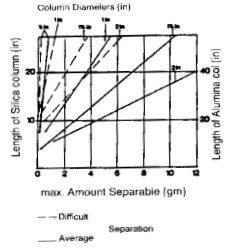
The load sample versus adsorbents is maintained at
approximately less than 1:500 in TLC while the ratio is 1:300 or even higher for DCC.
| Dry
Column Chromatography DCC Compared to TLC |
Chromatographic
Parameters |
TLC |
DCC |
| Solvent Reservoir |
tank |
overhead |
| Solvent Force |
capillary |
gravity |
| "Charge" Addition of Sample |
pipette |
pipette |
| Support |
glass, plastic |
nylon tubes |
| Sorbent |
silica, alumina |
silica, alumina |
| Sorbent Activity |
low |
low |
| Equilibrium with solvent vapor |
partial (sometimes controlled) |
none |
| Dimensions of width:thick:length sorbent bed |
200:1:200 |
1:1:20 |
| Detection |
visible, UV spray techniques |
visible, UV |
| Techniques for Recovery |
scrape off elute |
cut into sections elute |
DCC: THE PROCEDURE
A simple and efficient Prep LC technique
Simplified Procedures
- Use the same solvent system that was developed on a TLC plate.
- Cut the nylon tube to the desired length. Special note: to isolate 1g
of material use approx. 300g of sorbent in a 1 meter x 40 mm nylon tube.
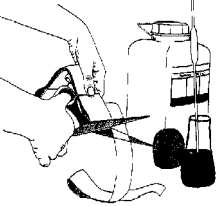
- Close the tube by rolling up the end and securing it by a seal or
clip/staple.
- Insert a small pad or wad of glass wool at the bottom of the column;
pierce holes at the bottom with a needle.
- Dry-fill the column to 3/4 of the length.
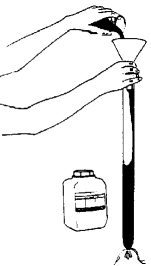
- The sample to be separated should be combined with approx. 10 times
its weight of the same sorbent in a conical test tube. Evaporate off the solvent and place
the dried sample-sorbent charge to the top of the column, be careful to keep the
sample-sorbent as an even layer.
- Add an additional cm of sorbent on top of the sample charge followed
by a small pad of glass wool.
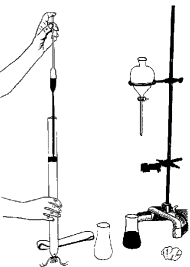
- Fasten the tube to a clamp on a stand.
- Open the cock of the solvent reservoir and add solvent until it
reaches the bottom of the column. Stop. Elapsed time approx. 30 min.
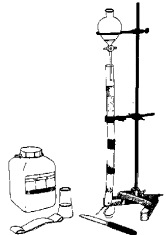
- Find the location of the separated bands by visible, UV, UV
quenching. Alternatively, cut a 1/16" slice off the tube. Spray with visualization
reagent and align with the untreated column to identify (mark) the separated bands.
- Mark the location of the bands on the nylon tube.
- Remove the column from the clamp.
- Slice column from the clamp.
- Slice column into desired sections with a knife.
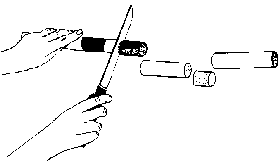
- Elute the pure compounds from the sliced sections with polar
solvents.
References
B. Loev and K.M. Snyder Chem. Ind. (London) 1965, 15
B. Loev and M.M. Goodman Chem. Ind (London) 1967, 2026
Sorbent Selection
The following SAI Silica Gels for DCC are recommended:
| CAT# |
Description |
| 04530-05 |
SILICA DCC (DRY COLUMN CHROM), F-254,
63-200u, 500g |
| 04530-3 |
SILICA DCC (DRY COLUMN CHROM), F-254,
63-200u, 3kg |
| 04530-25 |
SILICA DCC (DRY COLUMN CHROM), F-254,
63-200u, 25kg |
| 04630-25 |
SILICA DCC, W/O F-254 INDICATOR, 63-200u,
25kg |
Nylon Foil Tubing
DCC is simple and economical because the sorbent is filled into nylon tubing (other types
of columns such as glass etc. may also be used). This tube is sold folded and in rolls. It
is easy to remove possible creases by blowing a hot air stream through the tubing. Shaking
the tubing in acetone prior to the hot air treatment facilitates "ironing" of
the nylon tubing. Tubing sizes from 1" to 6" are available. See
Price List. |

